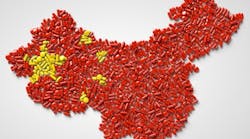“The increased focus on GMP is part of a move to play a larger role on the world-wide finished dosage market -- and of course, in part, a response to Heparin and other quality concerns that occurred years ago,” says Bass. “China began its entry into the market by cornering much of the API business, and by focusing heavily on domestic-oriented generic drug production. While the focus on generic drug production has not changed, and while China is now, along with India, a major source of global API, the industry has evolved both in terms of innovative research and investment and in terms of facility upgrades.”
According to Bass, new GMPs issued several years ago by CFDA appear now to be ready to be enforced, in part, he says, because the government believes that companies have evolved to the point where enforcement will actually be meaningful. China has now permitted 17 additional U.S. FDA inspectors to obtain visas, notes Bass, explaining that move will support greater scrutiny over exported pharmaceutical, medical device and food products. Bass notes, “China is also well aware of the U.S. enforcement against quality concerns in India,” as another motivator prompting the Chinese government’s push for pharmaceutical manufacturing quality.
CHINA'S GETTING THE MESSAGE
To be a global player one has to play by the rules and China, apparently, wants to play and by the industry’s established rules. “They are getting the message that quality drives international participation,” says Bass explaining that the Chinese government is also investing in research and development incubators and other discrete innovator strategies. “China is also ostensibly avoiding some of the problems that plague the manufacturers in India,” says Bass, “who are subject to multiple Import Alerts in the United States and some investigations.”
For most observing China’s pharmaceutical industry, what appears is usually a study in contrasts, with the forces of free-market capitalism bumping up against centrally planned socialistic economic doctrine, as well as other social and political dichotomies that tend not to support operational excellence and an institutionalized and pervasive quality culture. “Like much of the business, politics and life in China, there are always two stories at the same time,” says Bass. “It will be a long time before the underdeveloped rural poor areas of China meet the same standards that the highly industrialized, export-oriented provinces/cities demonstrate. So quality remains the main theme.”



